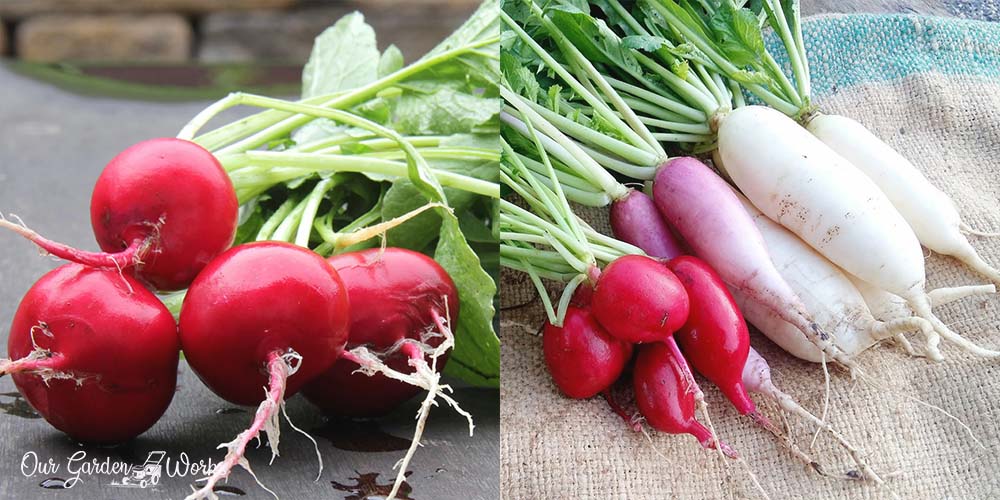Radish is one of the underrated vegetables in the market that contains a lot of benefits.
If you are curious about the health benefits of eating radishes, you’ll be surprised about their ability to control the most common chronic diseases today.
In this post, we’ll walk you through the health benefits and side effects of radishes and make you fall in love with this crunchy but juicy vegetable.
All About Radish
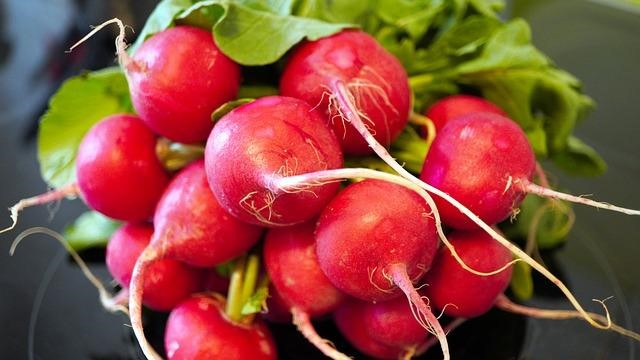
Radish is a root crop that has white to pinkish flesh and a peppery taste. It is part of Southeast Asian cuisine used as an ingredient for stews and an added crunch for salads. It is now gaining popularity in the Western region due to its peculiar taste and tons of medical benefits.
The root is usually used in most cuisines. However, some countries are using radish leaves as part of their diet.
If you are curious if the radish leaves are poisonous or not, we discussed it in detail in another post here.
Radish comes in varieties and comes in different colors like pink, purple, green, and white. Some radishes are round, and others are thin and long.
Here are the common types of radish:
Daikon or Japanese Radish
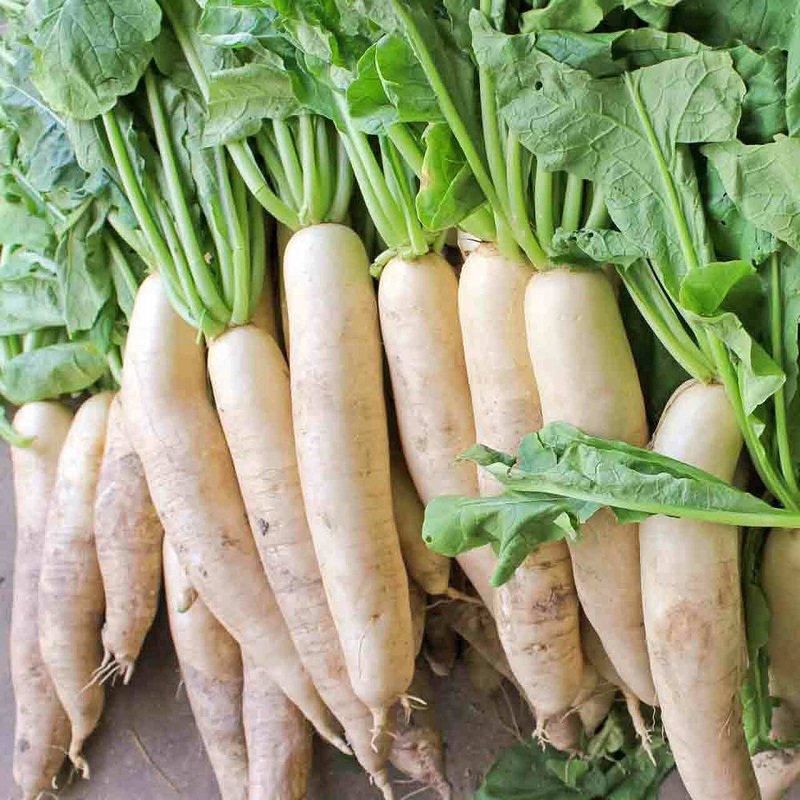
It has long but thin flesh and white skin. It has a lot of names, such as winter radish and oriental radish.
Round Radish or Globe Radish
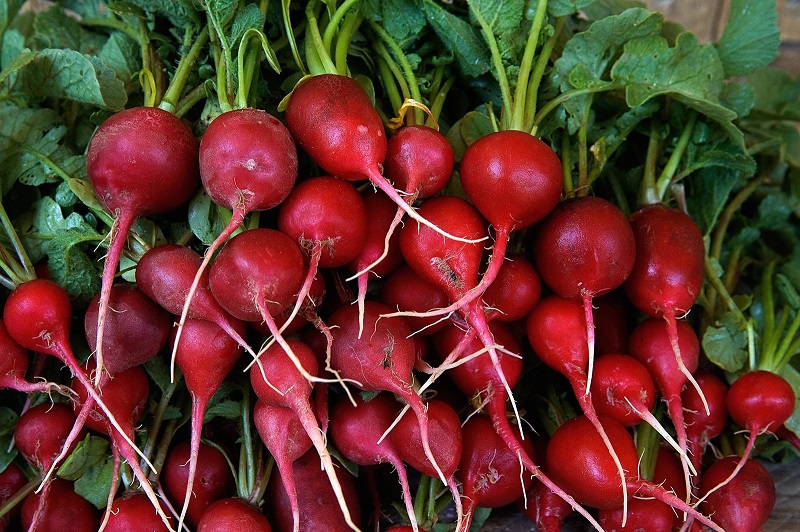
Pink skin with round short and round flesh. It is mildly more spicy than other varieties.
Mu or Korean Radish
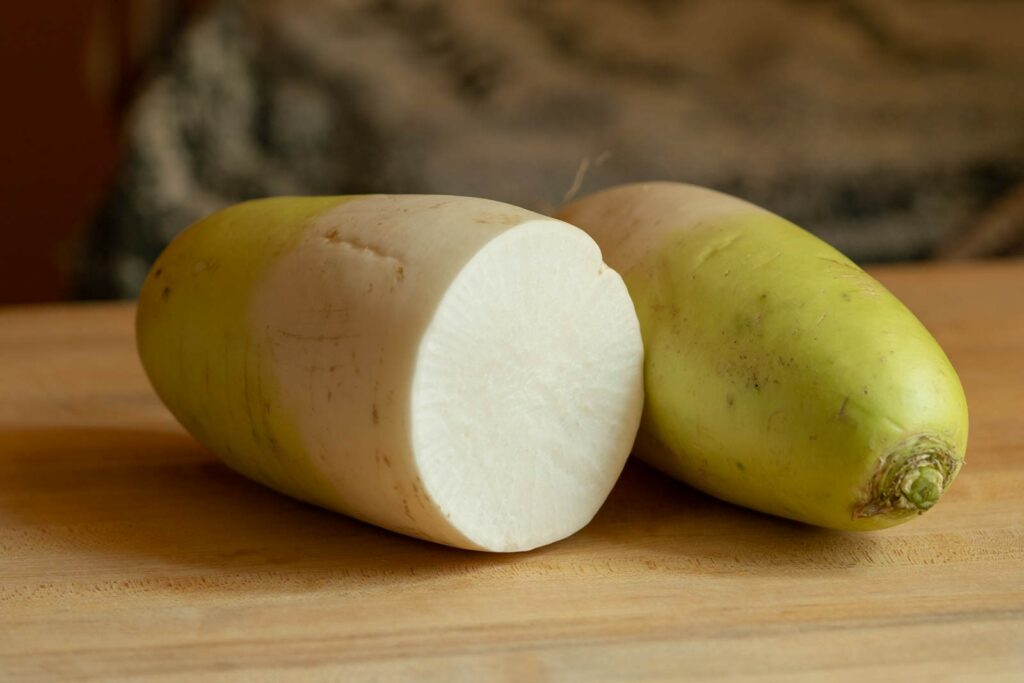
It’s a white outer layer and a stout body like a potato. It is a common ingredient in kimchi and other fermented foods in Korean cuisine.
Watermelon Radish or Chinese Radish
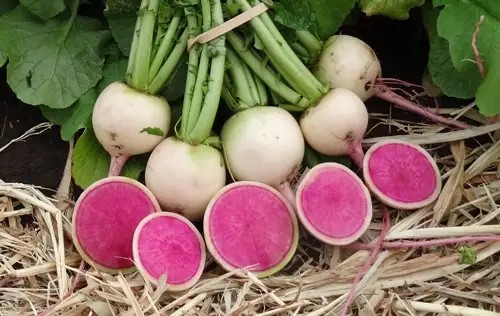
It has a sweet but peppery taste. It has red flesh and pale green skin that resembles a watermelon where it got its name.
10 Health Benefits of Radish
Did you know that radish is an ancient crop that was once used as a medicine in ancient Egypt?
The first records of radish are recorded in books retrieved from 484-424 BC. It was used as a nonpoisonous treatment for cough back in the day.
Today, there are already tons of studies conducted for radishes that exposed their impressive benefits to our bodies.
These include:
1. Excellent Fungicide
According to a study, Raphanus sativus antifungal protein 2 (RsAFP2) in radish can kill cells of Candida Albicans that cause fungal infections in humans.
Adding radish to your diet lowers your risk of developing diseases caused by Candida Albicans, such as oral and vaginal yeast infections.
2. Helps Prevent Cancer
According to a study from Ohio State University, radish contains enzymes that can help prevent and fight cancer cells. Anthocyanins in radishes have anti-carcinogenic properties that kill cancer cells and prevent the formation of tumors.
Radish is also one of the most recommended anti-cancer foods by the American Institute For Cancer Research to promote cancer prevention and recovery.
3. Herbal Treatment For Cough

One of the unpopular uses of radish is being a treatment for colds and coughs.
Black radish is one of the lesser-known varieties of radish that has been a beneficial root crop during winter. It is rich in Vitamin C and phytochemicals that help treat the common cold, cough, and relieve inflammation.
To prepare a cold and cough syrup out of the black radish, you have to mix it with sugar or honey.
Here’s what you need to extract the healing properties of black radish:
- Wash and peel the black radish.
- Cut it into cubes and place it in a clean jar.
- Add honey or sugar and cover it with an airtight lid.
- Leave the radish and honey mixture for two days to extract the most nutrients from the radish.
- After two days, you will see the juice extracted from radish gets mixed with honey. Drink it as a natural remedy for cough by taking one spoonful of the honey-radish extract.
4. Aids in Blood Sugar Control
Isothiocyanate and glucosinolate are chemical compounds found in radish that regulate your blood sugar levels. Radish also helps keep insulin resistance at bay by improving your body’s production of the hormone adiponectin.
Aside from controlling your blood sugar, a study shows that radish also contains Coenzyme Q10 or ubiquinone that prevents your body from Type II diabetes.
5. Detoxifies Your Blood and Keeps Your Liver Healthy
Radish prevents cell damage of red blood cells and detoxifies your blood. In turn, your liver also benefits from the healthy blood cells and improves the oxygen flow in your body.
Indole-3-carbinol and 4-methylthio-3-butenyl-isothiocyanate in daikon radish can flush the toxins in your kidneys and enhances your circulatory system.
6. Lower Your Blood Pressure and Improves Your Heart Health
Our organs work hand in hand to keep us healthy. If your liver benefits from the antioxidants found in radishes, your heart will also reap its benefits.
Aside from preventing red blood cell damage, radishes also contain natural nitrates that improve blood flow.
Radishes are also high in potassium and calcium that are both good for maintaining healthy blood pressure.
According to a study from the American Chemical Society, the monster daikon is the newest heart-healthy vegetable that helps protect your coronary blood vessels and prevent stroke.
7. Nourishes You With Vitamins To Prevent Cell Damage
Our cells get damaged as we get older. However, nutrients from radish can prevent age-related cell damage due to an unhealthy lifestyle and delays or prevents your likelihood of developing chronic diseases that come with age.
8. Promotes Healthy Digestion and Feelings of Satiety

Radishes are made of 95% water which helps you keep hydrated and feel full for a long time. They only contain 3% carbohydrates and 1% protein, making them a good part of any keto or low-carb diet.
9. Boosts Your Immune System
Radishes contain several nutrients that help your immune system fight diseases. It is a suitable alternative to citrus fruits as a good source of Vitamin C.
They are rich in the following nutrients:
- Thiamine
- Vitamin B6
- Folate
- Potassium
- Iron
- Manganese
- Calcium
- Riboflavin
- Niacin
10. Nourishes Your Skin
Our skin reflects our overall health. As radishes improve your health internally, they can also help you achieve plumper and healthy-looking skin.
They keep you hydrated and contain nutrients like Vitamin C and phosphorus that can boost your skin health.
What Are The Side Effects of Radish?
Anything taken excessively is not good for our health. Eating radish in moderation will not cause any side effects.
However, you will get an upset stomach when you eat them excessively. Other possible side effects and complications of consuming radish include:
- Consuming too much radish can lower blood sugar and cause hypoglycemia. Diabetic patients must take extra caution in eating radish or adding radish to their diet.
- Radish can affect the bile flow of our body. Patients with gall stones may experience sharp pain when eating radish due to the gall stones blocking their bile duct.
- Due to the effect of radish on your blood sugar level, try not to consume them two weeks before your surgery. Doing so can prevent any possible complications during and after your surgery.
- Radish is mostly made of water and contains properties that can make pee a lot. Consequently, due to excessive water loss due to frequent urination, you may become at risk for dehydration.
- Pregnant and breastfeeding mothers should also avoid eating radishes. Uncooked and not well-cleaned radishes can put pregnant women at risk for life-threatening infections like Salmonellosis and Shigellosis. These types of illnesses can cause symptoms that could affect their pregnancy. In worst cases, it could lead to premature birth, miscarriage, or stillbirth.
Frequently Asked Questions (FAQs)
How many radishes should you eat a day?
A half-cup of radish can be enough for you to reap its benefits. However, eating excessive radishes can cause some side effects like an upset stomach and low blood sugar.
Do radishes cause gas?
Eating radishes can make you gassy. You may feel bloated, burp a lot, or fart when you consume it often. Other vegetables that can make you gassy include:
- Green pepper
- Onion
- Celery
- Carrots
- Artichokes
- Asparagus
- Broccoli
- Cabbage
- Brussels sprouts
- Cauliflower
- Cucumbers.
Is it okay to eat raw radishes?
Yes. It is safe to eat raw radishes. The taste of raw radishes is more spicy and zesty than the cooked ones. When radishes are cut thin, it is a perfect ingredient for your salad paired with balsamic vinegar or other salad ingredients.
Here are some simple recipes using radishes:
Radish Kimchi
Ingredients:
- 6 tsp fish sauce
- 1 tbsp minced garlic
- 1 tsp minced ginger
- 8 tsp Korean chili flakes or gochugaru
- 1/4 cup water
- 2 tsp rice flour
- 1 kilo of Korean radish or daikon radish
- 4 stalks of green onion
- 4 tsp. sugar
- 4 tsp. rock salt
- a half of a small onion (chopped)
- a half of an apple (chopped)
Direction:
- Clean the radishes and peel them.
- Cut the radishes into cubes and mix them with salt and sugar in a large bowl. Let it sit for an hour.
- In a separate bowl, mix the green onions, apple, and fish sauce. You can use a blender to achieve a thick paste from them.
- Cook the rice flour by mixing it with water in a separate pot.
- Mix it well to achieve a porridge-like consistency. Remove it from the heat and let it cool.
- Mix the blended paste of green onions and cooked rice flour in a large bowl. Set aside.
- Drain the radish cubes and wash them with cold water.
- Let it dry for 5 minutes to remove excess water.
- Mix the chili flakes or gochugaru to the radish cubes.
- Once all the cubes are covered with chili flakes, mix the paste you made a while ago.
- Put your newly mixed radish kimchi in an airtight jar and let it ferment for a couple of days.
- Keep your radish kimchi in the fridge at all times.
How do you eat radishes?
There are plenty of ways to eats radishes. You can eat them raw and add them to your favorite salad.
In some cuisines, you can stew it with other ingredients such as beef and radish stew. You may also add it to your skewers to add more flavor to the meat.
Are radishes a superfood?
Yes. According to Megan Byrd, R.D., founder of The Oregon Dietitian, radish is a superfood. It has several health benefits that can prevent chronic and life-threatening diseases like cancer, diabetes, and heart disease.
How are radishes cleaned?
Brushing off the dirt on the outer layer of radishes is the first step in cleaning them. You should also remove their tops and their extending roots. If not cleaned well, they can put you at risk for soil-borne diseases.
Is radish good for your hair?
Radishes help improve blood flow and contain high levels of iron. Good blood flow improves blood circulation on your skin, and iron is also good for your hair and nails.
Final Thoughts
When eaten in moderation, radishes are a perfect addition to your diet. They are an underrated superfood that can keep you away from serious diseases and even help you delay aging.
We hope that this post has helped you discover the health benefits of eating radishes. On the other hand, we also hope you will consider the possible side effects of radish on your health before indulging in them.
We hope that radishes gain more popularity in western cuisine and help more people become healthier.
If you find this post helpful, please don’t forget to share it with your friends. Also, what is your first dish using radishes? Let us know in the comments section below!
